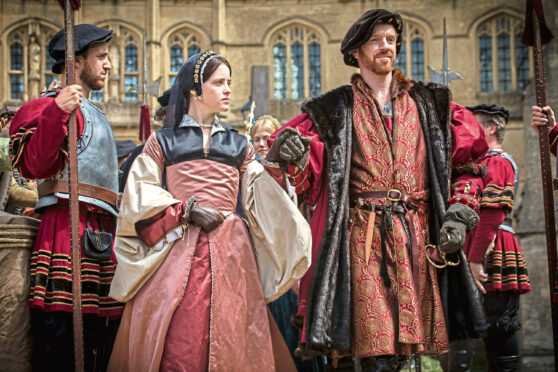
He was one of one of the most famous monarchs in English history and his actions some of the most shocking.
Here, former primary school teacher Laura Steele, of education resources experts PlanBee, tells Murray Scougall the Honest Truth about the Henry VIII and all those scandals.
Who were the Tudors?
The Tudors came to power in 1485 when Henry Tudor defeated King Richard III at the Battle of Bosworth. This was the last battle in the Wars of the Roses, which saw the Lancastrians and Yorkists battle for the crown. Henry Tudor became King Henry VII, and his children and grandchildren ruled the country for 118 years.
When did Henry VIII take the throne?
He became king on June 24, 1509, and reigned until his death on January 28, 1547, at the age of 55. Henry never expected to be king. When his older brother, Arthur, died of the “sweating sickness” in 1502 at the age of 15, Henry, then aged 10, was suddenly next in line to the throne.
What kind of king was he?
He was considered to be ruthless. During his almost 38-year reign, it is said he ordered the execution of 70,000 people. He was also a big spender – he frequently threw extravagant parties and built many magnificent palaces in order to show off his wealth to both his supporters and rivals.
Was he always obese?
He was healthy and athletic in his younger years, and loved to joust and hunt. Henry was over 6ft, which was extremely tall in Tudor England. But after a jousting incident in 1536, where he suffered a painful leg wound, he found it difficult to remain mobile. By the age of 50, Henry was grossly overweight, with a 54-inch waist.
Did he have any special talents?
He could speak Latin, French, Spanish and Greek. He also played a variety of wind and string instruments, and was also a composer.
When did Henry first marry?
He was 17 when he married Catherine of Aragon, who was 23, in 1509. She had been the wife of Henry’s older brother, Arthur, who died less than six months after the wedding. She had six children with Henry but only one survived. By 1525, Henry began to believe his marriage was cursed and that he shouldn’t have married his brother’s widow.
The Pope wouldn’t allow a divorce, so he broke away from the Catholic Church to create the Church of England – as the head of the church, he was able to divorce. The marriage was annulled after 24 years.
Why was his second wife, Anne Boleyn, executed?
Henry hoped she would give him the son he desperately wanted, so he was bitterly disappointed when she gave birth to a daughter, Elizabeth.
So he turned his attention to another lady of the court, Jane Seymour, whom he wished to marry. Thomas Cromwell, Henry’s secretary, looked for a way to solve the problem, so he accused his wife Anne of having affairs and so she was put on trial and found guilty of treason.
Was Jane his true love?
They became engaged the day after Anne Boleyn’s execution and were married 10 days later. Henry was overjoyed when Jane gave birth to a son but the happiness was short-lived because she became very ill and died soon after.
Although they were married for less than two years, and Henry would go on to marry three more times, Jane was the wife he loved the most. He gave instructions that he was to be buried next to her when he died.
Who were Henry VIII’s children?
He had three legitimate children that survived past infancy – Mary (by Catherine of Aragon), Elizabeth (by Anne Boleyn) and Edward (by Jane Seymour).
All three in turn became English monarchs after their father’s death.
Edward VI reigned from 1547 to 1553, Mary I reigned from 1553 to 1558 and Elizabeth I reigned from 1558 to 1603. After the death of Elizabeth, who had no children, the throne passed to the House of Stuart.

Enjoy the convenience of having The Sunday Post delivered as a digital ePaper straight to your smartphone, tablet or computer.
Subscribe for only £5.49 a month and enjoy all the benefits of the printed paper as a digital replica.
Subscribe